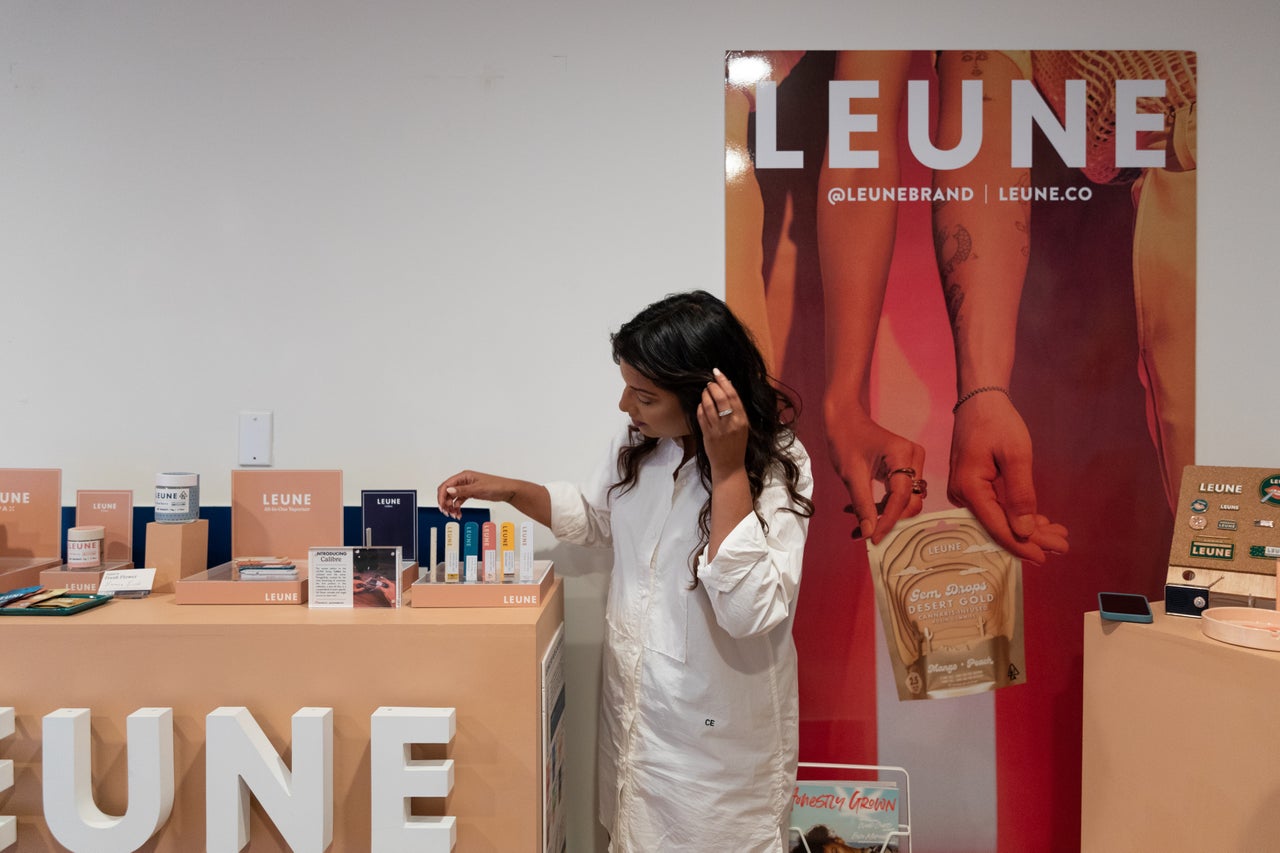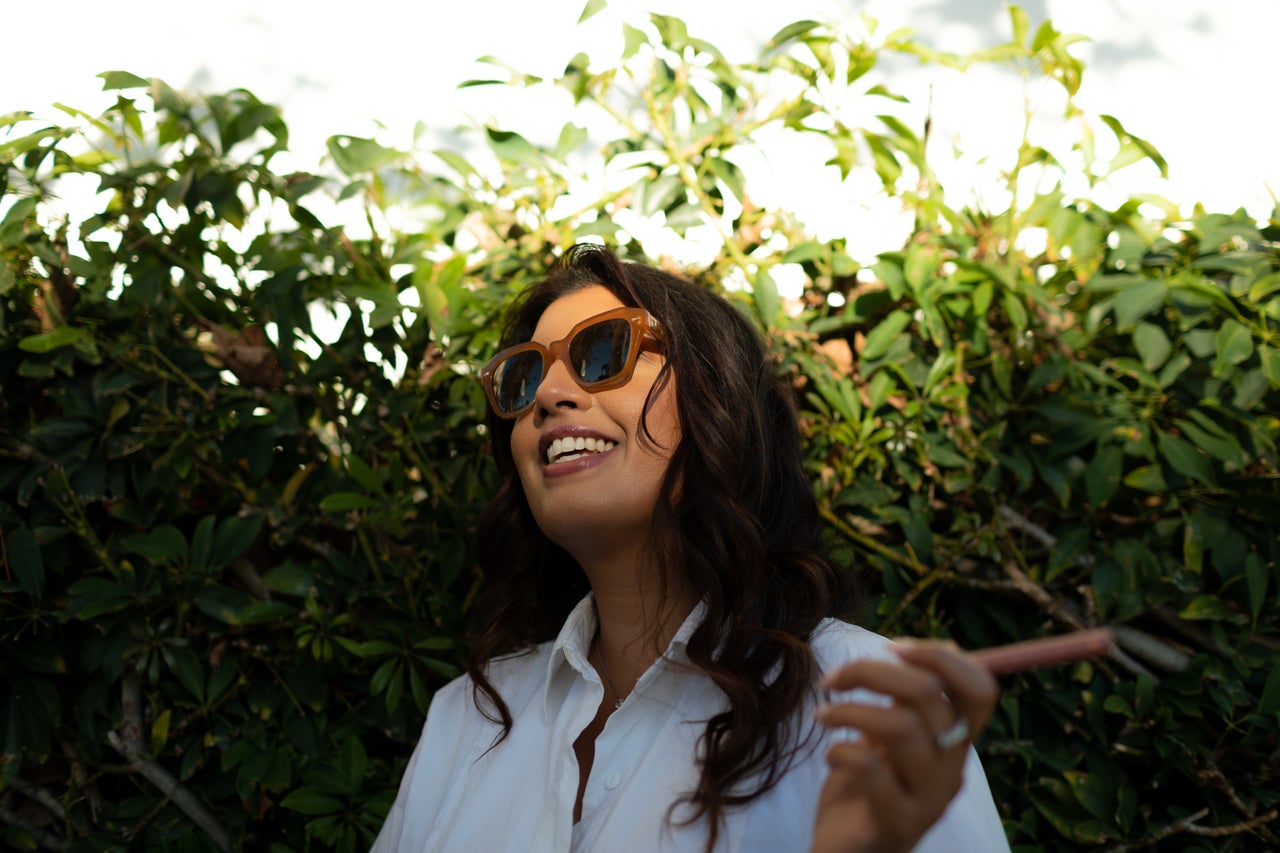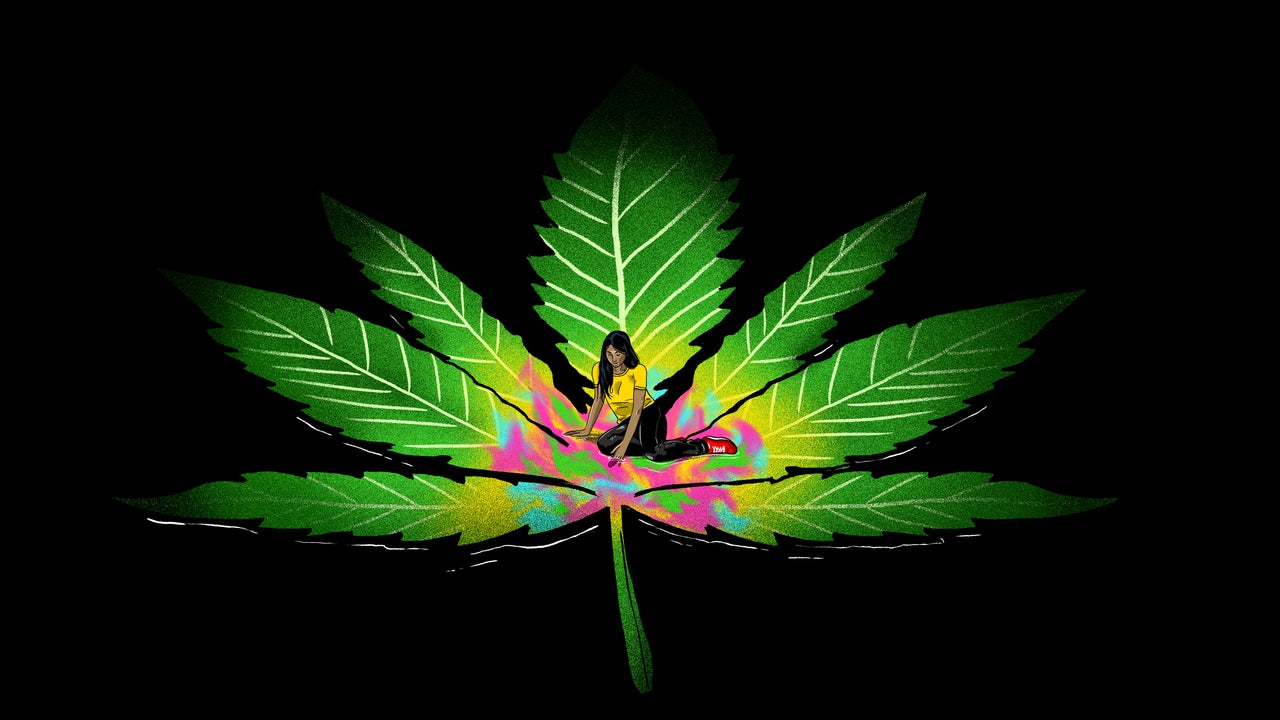When Emel, 34, consumed cannabis for the first time, it wasn’t at a house party with a cloud of smoke drifting up and onward, or any other clichéd scene that programs like D.A.R.E. used to warn her about — nor was it this great act of rebellion or dissent by an angsty American teen.
It was 2009, and Emel, who omitted her last name to avoid drug-use stigma at her job, was at a backyard barbecue hosted by a college friend’s family, whose Mexican heritage meant that their East Los Angeles home swelled with mariachi music and the chatter of aunties and uncles. The homemade brownies were perched alongside the rest of the food on the table, she recalls, readily available for the adults. Emel felt safe enough at the party to know that she’d be taken care of in case something happened — so she tried some.
“The thing I remember most is how peppery the brownie tasted,” she says. “It took an hour for the high to really hit. It was really subtle. It wasn’t scary or anything like that — it was really pleasant. It was in that moment that I was, like, ‘Oh, this isn’t that bad.’”
But it wasn’t just the taste of the brownie that had surprised her. “Nothing else happened. The earth didn’t open up and swallow me in hell because I had an edible.”
Emel grew up in Pakistan, then immigrated with her family to Los Angeles in 2003 when she was 15. Her traditional parents’ moral compass included reductive binaries that made ethics almost too simple: Don’t smoke, don’t drink and don’t dress provocatively. To do any of these things would make you “bad.” “I don’t think I’m a bad person — I think I’m a really good person,” she says. “But that battle will always be in the back of my mind because that’s how stigma boils it down.”
Many cultures condemn cannabis, but there’s something uniquely bitter about the battle that’s been waged against the substance by the South Asian community. As misguided as this is, many (especially older) members cling to their “model minority” status, and consuming weed is, well, not model minority behavior.
This judgment of cannabis use manifests in harmful rhetoric that’s internalized by people like Emel who consume with caution and intention. It’s not uncommon for brown people to hide their cannabis usage from the watchful and discerning eye of the cultural community they live in, which sometimes views users of the plant as “lazy stoners,” even though the myth has been thoroughly debunked.
Yet it was always “log kya kahenge” — “what will people think” in Hindi — a catchphrase that our parents have thought out loud when we veered away from what they deem the safest and most honorable behavior.

“I think South Asians are one of the most community-based groups, which is a positive thing,” says Nidhi Lucky Handa, founder of the California-based cannabis company Leune. “But the exact opposite is true as well. The community is very concerned with what people think.”
A child of immigrant parents from India, Handa grew up in the suburbs of Boston. Though her parents were open to having conversations about traditionally taboo topics, like cannabis, Handa couldn’t say the same about her larger, conservative brown community. “When there was a function or birthday party, I was very aware that, even amongst my Indian peers, I would never talk about cannabis. It was an assumption that, at best, they might also smoke weed, but then it would get back to their parents and then put me in some sort of category of being a bad influence.”
Handa founded Leune in California — more than 3,000 miles away from this community in Boston — with the kind of IDGAF attitude that would make her younger self proud. The stigma she grew up with lurked in the background at times; she acknowledges that the physical distance served as armor against the whispers of the community she had grown up in. Away from home, she was able to focus on navigating the industry’s complex supply chains and ebb-and-flowing legalization. Not to mention, as a BIWOC founder in the industry, she had to face the additional laborious hurdle of having to dismantle its predominantly male and white landscape.
Though it’s easy for South Asians to deem the plant and its users as “bad influences,” the community’s stigma around the plant feels inherently contradictory. For one, it’s the South Asian cultures’ reverence for Earth and its natural elements that have led some brown people to see cannabis not as an offender but rather as another terrestrial inhabitant. “The way that my parents were, they were very interested in preventative medicine, homeopathy, ayurveda. So, from where I was sitting, cannabis was a plant first,” Handa says.

Pari Patel, a 25-year-old who’s studying medical cannabis science and cultivating her own homegrown cannabis farm, agrees. “Having a green thumb is in my blood. I grew up with the farms in India owned by generations of farmers,” the New Yorker says. “I’m a Patel, after all, so that’s our known trait back in the motherland.”
Patel’s exposure to cannabis, however, wasn’t born solely out of curiosity. “I actually learned about [cannabis] in religious school, in a story about how the lordship used ‘bhang,’” she says, referring to the low-potent paste made from the leaves of the cannabis plant that dates to as early as 1,000 BCE. On Hindu religious holidays that celebrate Lord Shiva, like the spring festival Holi, bhang is traditionally used in food and drink: cold and milky “thandai,” thick and creamy “lassi” and ghee-ful sweets, among other sugary and savory concoctions.
Cannabis has also been recognized in both ayurvedic and Unani systems of ancient medicine as a treatment for endemic diseases like malaria, among other ailments. “The Atharva Veda” — one of four sacred pieces of Indian literature — calls bhang (which English translations posit as hemp) one of the five “kingdoms” of plants that “free us from distress,” and varying legends across India tell tales of Lord Shiva’s consumption of bhang (this is why it’s present at religious festivals that honor him). It’s this very mythological and religious significance that has allowed bhang to escape India’s otherwise strict cannabis criminalization.
If cannabis has been interwoven in the fabric of South Asian existence, where exactly did the stigma around it come from? In the U.S. and many other Western nations, the answer may not be so elusive: politics. “It’s a much more linear thing to understand in the U.S. This is a plant that has been used as a weapon, to fuel the industrial complex and to further structural racism,” Handa says. “This country is founded on this great ability to bring people together over their mutual hate for immigrant groups.”
In fact, Indian immigrants — along with Mexican immigrants and Black people — were in the crossfire of an ensuing century-long political smear campaign against cannabis beginning in the early 1900s. California’s cannabis prohibition in 1913 was accompanied by public health official Henry J. Finger’s contempt of the “Hindoos” — who were in reality predominantly Punjabi Sikh people — “a very undesirable lot” for “initiating our whites into this habit.”

The “war on drugs,” which labeled cannabis as a “gateway drug,” coincided with the influx of South Asian immigration following the 1965 Immigration and Nationality Act. In 1985, the Reagan administration successfully pressured the Rajiv Gandhi-led India, a nation looking to strengthen its relations with the U.S. and tap into American technology, to outlaw cannabis vis-a-vis the Narcotic Drugs and Psychotropic Substances Act, codifying cannabis hostility into law on both sides of the Atlantic Ocean.
Despite all this context about how weed stigma persists for South Asian Americans, some have a hard time acknowledging that very stigma could be, at least partially, a part of their assimilation process. Within our diaspora, there’s a tendency to accept ideologies, no matter how stigmatized, as impenetrable truths when they’re coming from authority figures within political, legal and social structures. For first- and second-generation brown people in the diaspora, adjusting to certain so-called truths was a matter of survival.
Cannabis was a symbol of calamity, especially as South Asians massively immigrated against the backdrop of the war on drugs; witnessed the resulting mass, disproportionate incarceration of Black people; and navigated a post-9/11 world that already stigmatized brown people. Being “good” and keeping our heads down were perceived to be the safest options.
Emel, who was raised in a Pakistani Muslim family, agrees. “It never made sense to me that a man could marry outside his religion in Islam but a woman can’t,” she says. “There are certain ideas and structures that are ingrained within us, and we accept them without question.”
Increasingly, however, brown people are challenging these predisposed, unjust structures. Patel says that, though her family disapproves of her using cannabis, she’s no longer willing to hide her cannabis use on social media and in real life. “A lot of people who have judged me have now come around and are users themselves.”

Handa has noted a welcome shift in her community’s attitudes since launching Leune. “It was a ‘don’t talk about what she’s doing’ thing for a while,” she says. “Now I’ll get a random call, text or email asking, ‘Are you raising money? Can I invest?’”
Challenging stigmas also manifests in education. It’s important to note that cannabis can be addictive, especially for those who start as teens. But it’s crucial to recognize that cannabis can be a source of both physical and mental healing when used with informed guidance and intention.
Emel, Handa and Patel all credit weed for helping them through anxiety and other mental health struggles — a benefit that’s beginning to be backed by research. And, despite being demonized as an gateway drug, cannabis has actually shown potential as an exit drug in preventing opioid, tobacco and alcohol misuse. Medical marijuana has also been used to alleviate chronic pain and seizures in children.
Feelings around the plant are contradictory and complicated, and breaking down these barriers can be taxing. But for many South Asians, it’s worth the struggle.
“At the end of the day, [cannabis] is something that helps me be a better and healthier version of myself,” Emel says. “That is more valuable to me than preventing myself from doing something that’s ‘unsavory’ and suffering from it — preventing myself from being the whole person I can be.”
